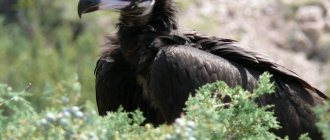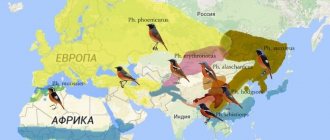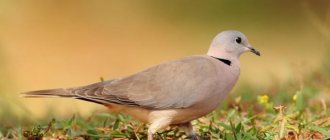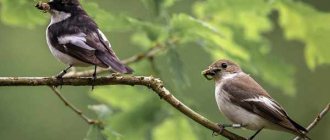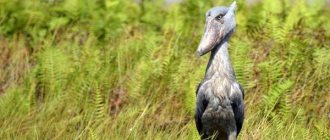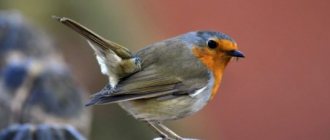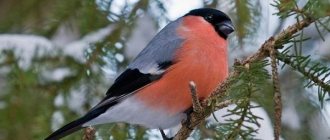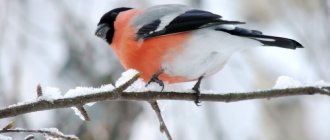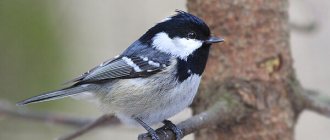| Latin name | Pelecanus onocrotalus |
| English name | Great white pelican |
| Squad | Pelican-like or copepods (Pelecaniformes) |
| Family | Pelicans |
| Body length, cm | 148-175 |
| Wingspan, cm | About 300 |
| Body weight, kg | 5-15 |
| Features | The only other related large species is the Dalmatian pelican. The pink pelican is identified by its white plumage, in contrast to the grayish-white of the Dalmatian. There is a pinkish spot around the eyes on the face, and there are also pink spots on the legs. Unlike the Dalmatian, the pink pelican is not a solitary animal and prefers to live in a group. |
| Number | About 300,000 birds |
| Security status | The pink pelican is listed in the International Red Book as a species of least concern today. |
| Habitats | Lakes, swamps, salt marshes. |
| Additionally | The maximum flight speed of a bird is 65 km/h |
- 2.1 Range
Description
— Advertising —
The pink pelican is the second largest bird in the family Pelecanidae, and is second in size only to the Dalmatian species.
Pelicans are most widespread in Africa, as 80% of breeding pairs mate there. However, due to climate change and the actions of people using wetlands, populations of the species are declining.
Pink pelicans live, breed, migrate, feed and fly in large colonies. The birds' search and production of food ends before 10 am, and they spend the rest of the day on the coastal territory: resting, cleaning themselves and swimming. When it's hot, pelicans will spread or flutter their wings to cool down. Sometimes birds perch on trees, but usually live on the ground. To defend the territory, the male threatens enemies by raising his wings, slapping the ground with his beak and bowing.
Number
— Advertising —
There are about 290,000 birds in the world. There are approximately 3,000 couples in Europe, half of which live in the Russian Federation.
Structure and dimensions
The description of the pink pelican says that males are larger than females and have longer beaks. Boys' beaks grow arched downwards, while girls' beaks are straighter. Boys are also identified by the presence of a tuft of feathers on the back of the head.
The plumage of the birds is white, except for the black tips of the wings. The chest and throat are pinkish or yellowish, depending on the sex or breeding season. The bare facial area of the breeding male is pinkish, while that of the female is orange.
There is a dark line on the upper part of the beak, while the lower part looks like a yellow pouch. Pelicans have short, strong legs and webbed toes that help them move through the water and take off from its surface.
The young have gray plumage and dark wings.
Habitat
Lakes, swamps, salt marshes. During the breeding season, the bird nests on isolated islands in lakes and rivers. Feeding sites may be several miles from nesting sites. The pelican also nests locally on coastal islands. When migrating, flocks stop at lakes and rivers. Winters along the coast, in shallow, sheltered bays and estuaries, as well as on large lakes in warm climates.
Area
The pink pelican bird lives all year round south of the Sahara Desert, in Africa. Populations of the species inhabit Eastern Europe and Kazakhstan, and when the breeding season begins, they migrate to northeast Africa, Iraq, northern India and southern Vietnam.
In Europe, birds are found in freshwater lakes, swamps, where there is a sufficient amount of grass or reed beds for nesting. In Africa, birds live in lowlands and freshwater or alkaline lakes. Shallow, warm water is necessary for birds to catch prey.
Geography of the species:
- Continents: Asia, Europe, Africa.
- Countries: Somalia; Tanzania; Togo; Türkiye; Armenia; Bangladesh; Benin; Bosnia and Herzegovina; Botswana; Bulgaria; Burkina Faso; Cameroon; Djibouti; Chad; Russia; Rwanda; China; Ethiopia; Georgia; Ghana; Greece; Malaysia; Mali; Pakistan; Palestine; Congo; Ivory Coast; India; Albania; Arabia; Senegal; South Africa; Sudan; Tajikistan; Indonesia; Iran; Iraq; Israel; Italy; Japan; Jordan; Kazakhstan; Kyrgyzstan; Laos; Lebanon; Macedonia; Malawi; Cyprus; Egypt; Eritrea; Gabon; Gambia; Romania; Saudi Turkmenistan; Uganda; Ukraine; South Sudan; Uzbekistan and many others.
Stavropol region
Status: I category. Endangered species.
Spreading
Breeds on the islands of the lake. Manych, irregularly - on the Chograi reservoir. In summer, some non-breeding birds stay in the northern part of the region.
Number
In different years, up to 100 pairs nest in the Stavropol region. In the post-breeding time, 400-500 birds stay on the reservoirs of the region.
Source: Red Book of the Stavropol Territory. Rare and endangered species of plants and animals. Animals. Ed. Chernogorov A.L., Garkusha V.F., Panasenko N.S., Shapovalov V.A. and others (2002) Stavropol: OJSC "Poligraphservis"
Nutrition
Pink pelicans have huge beaks that are adapted for catching prey while swimming on the surface of the water. When birds plunge their beaks underwater, their lower part expands, creating a large bag with which the birds catch prey. When pelicans lift their head out of the water, the pouch contracts, forcing water out through the top and bottom while keeping food in their mouth.
The species feeds on fish. Each individual needs about 1.2-1.4 kg daily.
Birds often form groups of 6-8 and catch prey together.
In some areas, pelicans are endangered due to water pollution or overfishing, forcing them to fly long distances to obtain food. There is a known colony of the species on Lake Rukwa in Tanzania, which consists of more than 80,000 birds. This flock needs more than 100,000 kg daily.
In addition to fish, pink pelicans also eat various types of aquatic inhabitants. They love small invertebrates such as insects, worms, mollusks, amphibians such as frogs and salamanders, and crustaceans such as crabs, lobsters, and crayfish.
A special feature is that birds eat turtles and chicks weighing up to 2 kg. in weight. When the above-mentioned food is not available, the birds eat gulls and other small birds, often holding them under water to drown them before eating. Interestingly, pink pelicans eat food stolen from other birds.
Reproduction
The breeding of the pink pelican bird occurs in the spring in temperate climate zones of Europe, as well as all year round in Africa. Finding a mate for the birds is easy, since they live in a large colony near the water. Pair formation, nest site selection, and nest construction occur quickly: from several hours to a week. Most often, the nest is located on the ground and consists of a pile of sticks.
The female lays 2-4 chalky white eggs, mostly 2, each weighing from 160 to 200 g. The parents incubate the eggs for approximately 29-36 days, caring for the chicks in turns.
Economic importance and protection
The number of the pink pelican is so small that it cannot pose a real threat to fisheries and fish farms. In the 1960s in the Aral Sea, the number of copepods was reduced by a third, but no tangible effect was obtained for fisheries as a result of the measures taken (Markov, 1965).
Until the 1960s Hunters on boats drove flightless chicks into a heap near the colony and killed them with sticks. Fat was extracted from the carcasses, which was used to lubricate cart axles, boots, weapons, etc. Adult pelicans were shot for the skin or simply for the beak, from which the original sheath was made (Abramova et al., 1975; Grachev, 1977).
Currently, the pink pelican is protected everywhere. It is listed in the Red Book of the Russian Federation, the Red Books of Ukraine, Armenia, Kazakhstan, Uzbekistan, Turkmenistan and a number of other CIS countries.
Chicks
Newborn chicks are born naked, blind and helpless. Soon they begin to develop white woolly fluff. At this stage, young pelicans are unattractive and remain in the nest for about three weeks. Both adults feed the young by regurgitating fish soup from the front of the pouch.
As young pelicans grow in size, the parents provide more solid food, mainly fish.
The chicks begin to fly after seven to ten weeks. Pink pelicans become sexually mature after three to four years.
Wintering
Many users are interested in where pink pelicans live in winter? Science does not know exactly where European birds winter. But the species is believed to fly to eastern Africa and Iraq. It is noted that many colonies spend the winter months near Sri Lanka and Pakistan.
Northern birds winter in China, India, Indonesia and Bali.
Pink pelican in the Red Book
Although the birds are still relatively common, the number of pink pelicans is declining for several reasons:
- Fishing in some areas.
- Water pollution.
- Loss of habitat and breeding habitat.
- Human exploitation.
The draining of wetlands and the diverging of rivers to provide irrigation for agriculture has led to declines in bird numbers in the Palearctic and parts of Africa. Scientists have proven that this is the cause of population decline in many colonies around the world.
The use of the insecticide DDT in large parts of Africa to control malaria-carrying mosquitoes is causing pelican eggs to thin out. It also leads to decreased reproduction and toxic intoxication in adults.
In addition, synthetic polychlorinated biphenyls, which are found in industrial paints and machine parts, pose a threat to birds in the Middle East and North Africa.
The species is also affected by high levels of agricultural pollutants that enter fresh water. Substances accumulate in adult birds after eating fish, which become saturated with them in rivers and reservoirs.
Changing water levels caused by climate fluctuations also pose a threat to the species. This occurs in two ways: due to flooding of nesting sites during high water levels and salinization and death of fish during low water levels.
The bird often dies due to collisions with power lines during migration, as well as drowning in fishing nets.
Conservation status by region:
- Altai region
- Astrakhan region
- Volgograd region
- Kemerovo region
- Kurgan region
- Novosibirsk region
- Omsk region
- Altai Republic
- The Republic of Dagestan
- Republic of Kalmykia
- Republic of Crimea
- Rostov region
- Saratov region
- Smolensk region
- Stavropol region
- Tambov Region
- Tyumen region
- Chechen Republic
Interesting Facts
- "Pelecaniformes" is the genus to which pelicans belong. The pink pelican is distinguished from other birds by its four webbed toes.
- The yellow pouch at the bottom of the bird's beak holds about 13 liters of liquid and up to 4 kg of fish.
- The pink pelican is an excellent inhabitant of the sky, capable of flying for days and nights without stopping, covering distances of up to 500 km. The bird is also surprisingly light for its size due to air spaces in the bones and under the skin. This physical trait helps the pelican fly such long distances.
- During breeding, the birds' plumage is pinkish, with yellow patches on the chest.
- Due to overfishing in certain areas, birds are forced to fly long distances in search of food.
- The pink pelican bird is exploited for many reasons. The skin is turned into guano, which is used as fertilizer, and the fat of the young is turned into oils for traditional medicine.
- This species is often kept in captivity, in zoos or in semi-wild colonies such as those in St James's Park in London.
- Bird fossils discovered in rocks indicate that pelicans lived about 40 million years ago.
- The question of where pelicans fit into the bird family tree has been debated for centuries. Genetic evidence suggests that the species' closest relatives are a strange-looking bird in the order Cioriformes known as the hammerhead.
- Life expectancy in the wild is 15-30 years.
- The pink pelican and cormorant species are often found together. Sometimes, birds forage together for food, although they hunt different fish and at different depths. Cormorants even nest individually or in groups in pelican colonies.
- Pink pelican embryos "scream" before hatching. This is how chicks express discomfort if living conditions become too hot or cold.
- The beak of the species ends in a hook and can grow up to 50 cm in length.
- The mating displays of the pink pelican deserve special attention. If you look closely, the birds' flirting looks like a dance: a couple takes turns soaring into the air and then descending to the water. Next, the male and female touch each other’s beaks, after which mating begins.
- Pink pelicans “squeeze out” the feathers with their beaks, as they become excessively wet, which weighs the bird down.
- Muslims consider the pelican a sacred bird. According to legend, birds delivered stones for the construction of shrines in Mecca.
Republic of Crimea
Status: III category. A rare species, endangered.
Spreading
Breeding migratory, nomadic and wintering species.
Number
Breeds since 1999 on accumulative sea islands, numbering up to 50 pairs.
Source: Red Book of the Republic of Crimea. Animals. Rep. ed. S.P. Ivanov, A.V. Fateryga (2015) Ministry of Ecology and Natural Resources of the Republic of Crimea. IT ARIAL LLC, Simferopol

